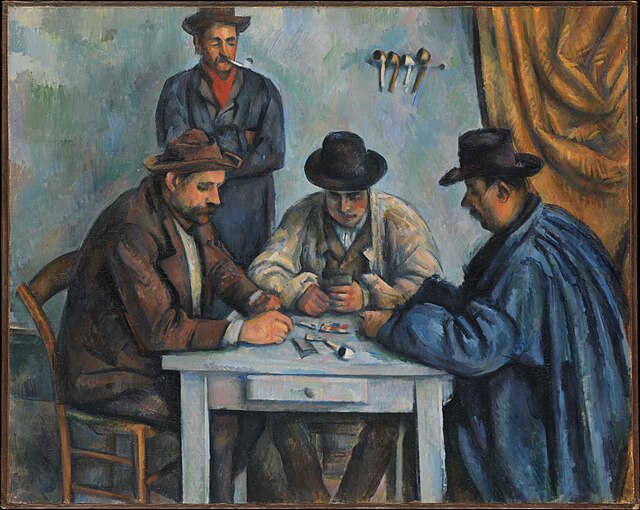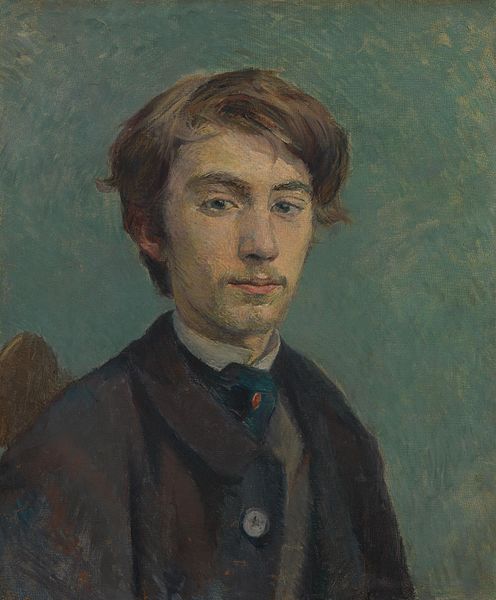Henri de Toulouse-Lautrec
Comte Henri Marie Raymond de Toulouse-Lautrec-Monfa, known as Toulouse-Lautrec, was a French painter, printmaker, draughtsman, caricaturist, and illustrator whose immersion in the colourful and theatrical life of Paris in the late 19th century allowed him to produce a collection of enticing, elegant, and provocative images of the sometimes decadent affairs of those times.
Toulouse-Lautrec in 1894
Mr. Toulouse paints Mr. Lautrec (c. 1891), a photomontage by Maurice Guibert
The Marble Polisher, 1882–1887, Princeton University Art Museum, probably painted while a student of Fernand Cormon, demonstrating his classical training
La toilette, oil on board, 1889
Post-Impressionism was a predominantly French art movement that developed roughly between 1886 and 1905, from the last Impressionist exhibition to the birth of Fauvism. Post-Impressionism emerged as a reaction against Impressionists' concern for the naturalistic depiction of light and colour. Its broad emphasis on abstract qualities or symbolic content means Post-Impressionism encompasses Les Nabis, Neo-Impressionism, Symbolism, Cloisonnism, the Pont-Aven School, and Synthetism, along with some later Impressionists' work. The movement's principal artists were Paul Cézanne, Paul Gauguin, Vincent van Gogh and Georges Seurat.
Henri Rousseau, The Centenary of Independence, 1892, Getty Center, Los Angeles
Paul Cézanne, Les Joueurs de cartes, Metropolitan Museum of Art, New York
Poster of the 1889 Exhibition of Paintings by the Impressionist and Synthetist Group, at Café des Arts, known as The Volpini Exhibition, 1889
Henri de Toulouse-Lautrec, Portrait of Émile Bernard, 1886, Tate Gallery London








